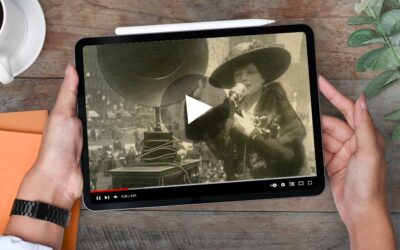How to Incorporate Interns in Museum CMS Projects: Data Cleanup and Refinement

Rachael Cristine Woody
This post concludes our series on how to incorporate interns in museum Collections Management System (CMS) projects.
In addition to how to set up the internship ethically, we have covered the first two project ideas: data capture and data creation. These “project idea” posts are intended for you to use as a template adapted to your needs. Each post will outline a suggested scope, project activities, and outcomes.
Today’s project idea will center on data cleanup and refinement as one example of a museum CMS project for future internships. While best practices and activities will be the same or similar across any data capture project, the numbers for suggested scope and outcomes are merely suggestions in order to demonstrate the project idea as a full concept.
What is “Data Cleanup and Refinement”?
Existing data within a CMS—especially if it is 10+ years old—typically needs some cleanup and refinement. The definitions for these two activities are as follows:
Data cleanup: The action of remediating data in order to correct it, make it more complete, and to bring it into alignment with best practices.
Data refinement: The action of enhancing the data to become more specific and descriptive, or to add data elements that further detail the item in the catalog. These improvements are seen as “optimal” or above the normal standard and can be performed in instances where enhanced cataloging makes sense, or as time allows.
It is important to note that data cleanup and refinement are a natural part of the collection management process; as we continue to learn more about the collections, best practices evolve, projects using the collections are completed, and we have time and capacity to spend on the data. These two activities (cleanup and refinement) often happen together as one is to correct the data and align it with best practices, and the other is to enhance the data to increase discovery and use. Both typically occur long after initial data has been captured and usually as the result of a project versus day-to-day work with the CMS.
Sample Scope of Work for the Intern
There are 100 items planned for a special exhibition and extensive research has been performed in order to improve description and interpretation of the items. In addition to this new information being included in the exhibit, you also wish to capture this new information in the CMS for each item’s record. You intend to host a museum studies (graduate-level) intern over the summer (for 12-weeks) to take on the task.
- Number of items included in advanced research with new data to review: 100
- Number of items records to cleanup and/or refine in the CMS: 100
- Number of workdays over the course of the internship: 60
- Number of items to review research and cleanup or refine per day: 1.5
Unlike the previous CMS project ideas, this type of project will require more time per item as the intern will need to review and synthesize a moderate amount of new item information. Any data cleanup will require adaptive application because each item will have different needs. Similarly, any enhancement to the data will require an individual approach. With that in mind, the number of items the intern can complete per day is a lower rate than the previous project ideas we’ve covered.
I encourage you to time yourself performing a couple of test runs to calculate an average for how long the activity will take. This will help give you a baseline. Then build in a buffer to account for the intern’s newness to the project, and any orientation or other non-project time that may take away from the intern’s total availability to perform work on the project.
Things to Put in Place
In order to capitalize on the intern’s time and help set the project up for success, there are a few items to put into place:
- A guide for how to review the new research, the elements to pay attention to, examples of how it can be applied to the CMS, etc.
- A spreadsheet or similar document that has a template of information for common data areas (CMS fields) that may require cleanup or refinement.
- A set of instructions that outline which fields to review and potentially amend and how that information should be captured. Note: These instructions should be based on museum best practices and the CMS catalog.
With clear and easy-to-follow documentation in place the intern won’t lose any time attempting to remember steps. Additionally, these resources will help to re-enforce the use of best practices and performing the work according to specifications.
Benefits for the Intern
This project idea is a unique opportunity for an intern to get into some advanced museum work. It allows them to build on the basics of collection cataloging and introduces them to expert-level materials to work with. Additional benefits are as follows:
- Increases the intern’s familiarity with the CMS and advanced descriptive options.
- Provides experience in synthesizing complex materials and critically thinking through how to transform the information meaningfully in the item record.
There are, of course, many more benefits that can be gained from any internship experience. When crafting an internship description, I recommend you include the benefits the intern will gain from both the internship experience at your museum as well as from the specific project they will be working on.
Conclusion
This concludes our series on how to incorporate interns in museum CMS projects. May these project ideas serve as a template and inspiration for you moving forward and serve as a solid foundation for including interns within increasingly advanced projects.
Additional Reading
Ask Me Anything (AMA): How to Conduct Efficient Data Cleanup
Common Museum Data Messes to Look For
Create a Plan for Museum Data Cleanup
Make a Plan for Non-Standard Museum Data
Strategies for Effective Museum Data Cleanup – Part 1

Rachael Cristine Woody
To learn more, please join us for a free webinar How to Incorporate Interns in Museum CMS Projects TODAY at 11 a.m. Pacific, 2 p.m. Eastern. (Can’t make it? Register anyway and we will send you a link to the recording afterwards). Register now
Never miss another post. Subscribe today!
Similar Posts
The CMS Digital Exhibit and Story Pathways
Digital exhibits provide powerful ways to engage audiences, but choosing the right story pathway is key. Explore how different exhibit structures—linear vs. multi-pathway—shape the visitor journey.
Captivating Story Delivery with a Multimedia Player
Explore how museums can enhance storytelling with multimedia players, using audio-visual materials and archival content to create engaging digital narratives.
How to Use Slideshows and Flipbooks to Offer Engaging Museum Story Visuals
Museums thrive on storytelling, and the right digital tools can make all the difference. Slideshows and flipbooks offer an engaging way to showcase collections, drawing visitors in with dynamic visuals and interactive elements.
Zooming Into Story Details:
How Museums Can Enhance Storytelling with Visual Tools
Visual tools such as zoom are crowd pleasers when presenting visual content online, allowing museums to create immersive and engaging digital experiences.




Leave a Comment
Comments are reviewed and must adhere to our comments policy.
0 Comments